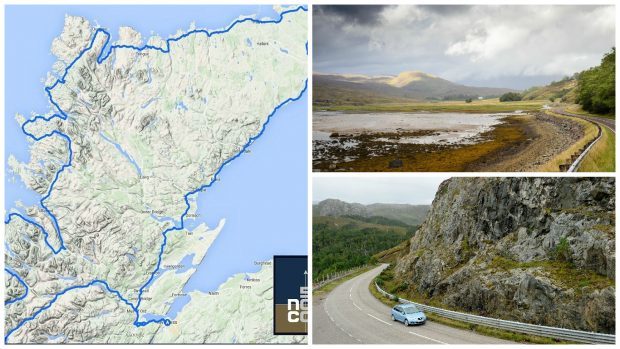The burgeoning popularity of the North Coast 500 road trip has sparked a trade boom which will create more than 200 new Highland jobs.
A new survey of 221 firms has underlined the success of the region’s answer to America’s “Route 66” – and revealed that all corners of the north have been reaping the rewards.
A total of 57 businesses stated that they would be moving to employ extra staff to cope with the soaring demand, creating 201 new jobs, which represents a 16% uplift on their workforce last year.
Tourism chiefs last night hailed the “enormous popularity” of the 516-mile route, saying the it had become a “must see” attraction for visitors from around the world.
The new research found that 86% of surveyed hotels, 78% of food and drink businesses, and 70% of activity providers reported an increase in trade in the last year, with 26% saying they intended to hire additional staff due to the interest.
Increasing trade was reported by two-thirds of surveyed businesses in the far north of the Highlands, 61% of those in the east of the region, 57% of those in the west, and 43% in Inverness.
The findings emerged yesterday as tourism body VisitScotland revealed plans to encourage more classic car clubs to try out the route, and to help local businesses cash-in.
The NC500 was launched in May 2015 by the North Highland Initiative in an effort to develop sustainable economic growth across the Highlands.
Highlighted on TV shows such as Top Gear, the loop was quickly dubbed as Scotland’s answer to the famous “Route 66” in the US, was named “Destination Specialist of the Year” at the 2017 Luxury Travel Guide Awards, and was recently named as one of the UK’s top road trips by Rough Guides.
David Whiteford, chairman of North Highland Initiative, welcomed the findings of the survey last night.
“Since the North Coast 500 route officially launched in May 2015, it has enjoyed enormous popularity, with visitors coming from all corners of the globe to experience the spectacular scenery, food and drink, and hospitality of the north Highlands,” he said.
“It has been a great showcase for the vast array of things to see and do in the area.
“This survey demonstrates that the route has had a measurable, positive impact on the economy of the north Highlands and shows that our collective efforts in marketing the North Coast 500 as a ‘must-see’ destination are paying dividends.”
Highlands and Islands Enterprise (HIE) helped develop the NC500’s feasibility and funded the baseline research for the route.
David Oxley, the agency’s director of business and sector development, said: “We are pleased to have played our part in helping make the North Coast 500 a reality.
“Tourism is one of our region’s principal growth sectors. It creates jobs in remote rural locations, particularly jobs for young people, and helps promote the Highlands and islands across the world.
“NC500 is a great example of a creative tourism initiative. It promotes some of the best scenery the north of Scotland has to offer and its huge consumer reach presents a massive opportunity for many businesses.
“We would encourage businesses on or close to the route to think about how they might capitalise on these opportunities and speak to us or Business Gateway about their ideas.”
Culture and Tourism Secretary Fiona Hyslop used the survey’s publication to unveil plans to revamp VisitScotland’s Classic Cars Welcome Scheme, which is open to businesses that go the extra mile to meet the needs of visitors who travel Scotland in classic, vintage or thoroughbred cars.
First launched in 2006, the updated scheme will now include visitor attractions and garages, with new criteria also now taking into account use of apps and the provision of Wi-Fi.
Ms Hyslop said: “The North Coast 500, a 516-mile scenic route around the north coast of Scotland, has played an important role in promoting Scotland as a must-visit destination for classic vehicle enthusiasts.
“The Welcome Scheme is an excellent way to attract more classic car owners to Scotland, and demonstrates how a successful collaboration between the private and public sector can have a positive impact on our tourism industry.”
Tom Campbell, managing director of North Coast 500, said: “The North Coast 500 has taken the north Highlands to global visibility since the official launch in May 2015.
“Accolades have included National Geographic and CNN ranking it as one of the top five ‘must see’ destinations in the world.
“The Classic Car Welcome scheme is a great resource for owners of some of the best-known classic car marques to come and tour this amazing route, and another way for businesses and attractions along the route to make the most of the tourism opportunity.”










